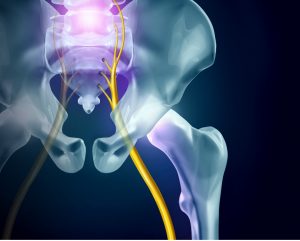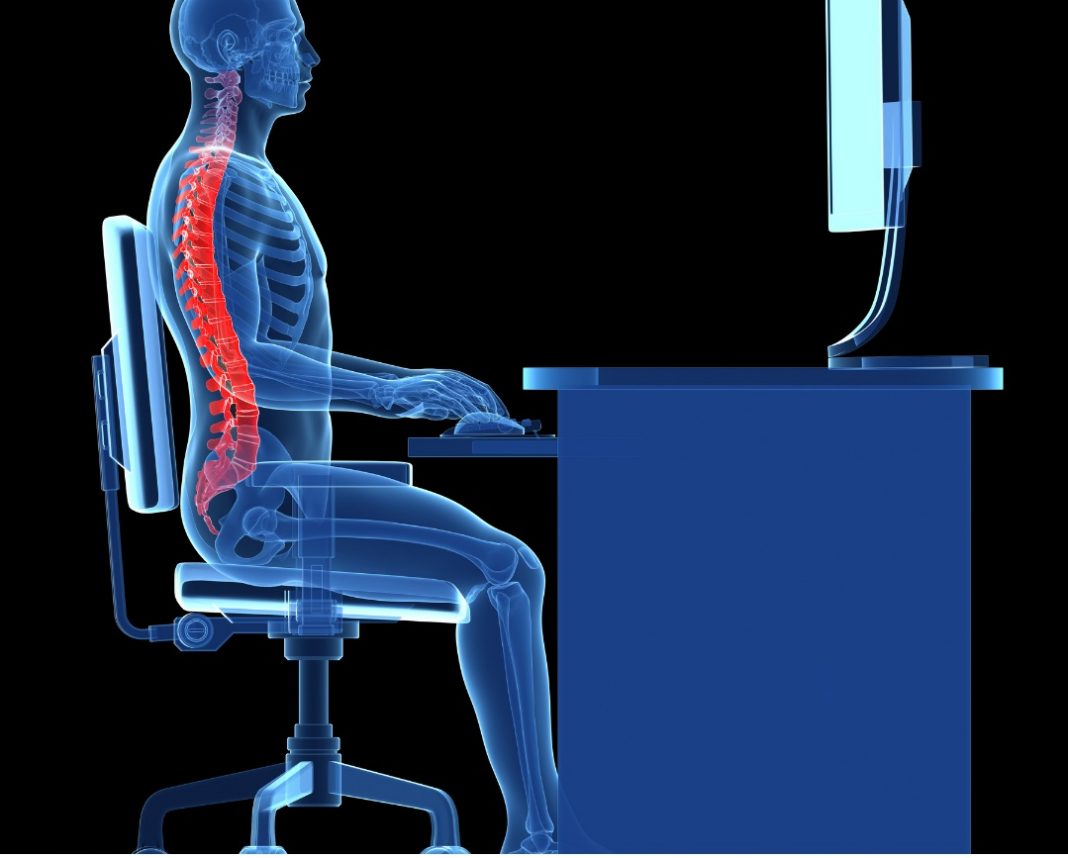Submitted by Dr. Jennifer Penrose for Penrose & Associates Physical Therapy
Sciatica just means pain in the leg. It doesn’t tell you exactly where it is coming from. However, most pain radiating into the leg comes from nerves that are irritated at the spinal level. The nerves exit the spine at each spinal level. So L1 stands for the first lumbar vertebrae and thus L1 nerve is named for exiting at that level. The lumbar spine has 5 vertebrae and thus 5 nerve roots that exit at each level.

The sciatic nerve is formed from the nerve roots from the spinal levels L4-S3 so it includes 3 sacral nerve roots and 2 lumbar nerves.
The sciatic nerve gives the ability for the muscles in your leg to work. Mostly the back of your thigh and adductors/inner thigh and then all the muscles in your lower leg and foot. Sensory functions: No direct sensory functions. Indirectly gives sensation (via its terminal branches) the skin of the lateral leg, heel, and both the top and plantar/bottom surfaces of the foot.
When it comes to sciatica we need to determine where exactly the nerve(s) are being compromised and then work towards alleviating that compression and giving movements and exercises that help the nerve(s) glide and move so that scar tissue does not cause the nerve to get trapped or stuck. Nerves once injured take a long time to heal but they do heal.
Can Nerves Regenerate or Heal?
Yes. Unlike nerves of the spinal cord, the peripheral nerves (the sciatic nerve is peripheral) that connect our limbs and organs to the central nervous system have an astonishing ability to regenerate themselves after injury. The rate is very slow 1 inch per month. So, if you damaged the sciatic nerve think about the distance from your foot to your spine/waist.
Most of the time sciatica recovers quickly if the pinched nerve can be decompressed. First pain decreases, then the funny tingling feelings decrease, and then the numbness can take a year or longer to completely resolve.
Regeneration time depends on how seriously your nerve was injured and the type of injury that you sustained. If your nerve is bruised or traumatized but is not cut, it should recover over 6-12 weeks. A nerve that is cut will grow at 1mm per day, after about a 4-week period of ‘rest’ following your injury.
The biggest peace of mind with sciatica is knowing the tingling, pain and numbness are all part of the process: do not be so worried about it when it happens. However, learn what motions are causing it to get worse and avoid those and learning what motions and movements are helpful for healing. This is where a spine physical therapist is extremely helpful.
Have you ever laid down in a curled-up ball and then when you woke up and stood straight you had that awful pain shoot down your leg? Well part of that was the position you slept in all night and the other is that we swell at night so it is more agitated when you go to stand up straight.
Learning what you can do to help avoid irritating the nerve is critical to healing the nerve. Many times, people feel like they need to stretch. However, when they show me the stretches those are the exact things that irritate the nerve. Yes, you may not feel it at the time of the stretch but you are worse hours later or sleep very poorly. We are here to help guide your healing and recovery and make sure you are doing the right things.
Happy to help you make sense of this complicated nerve business! We are located about three miles from Jubilee in the Harborstone Credit Union building at 1445 Galaxy Dr. Suite 301 in Lacey. We are doing Telehealth and in-person visits with ample social distance and masks. Visit the Penrose & Associates Physical Therapy website or call 360.456.1444.





















































